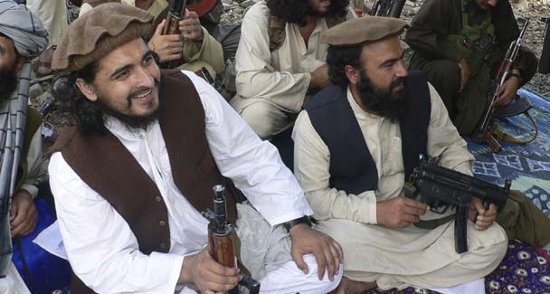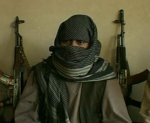Iraq Report: Lightning Hammer update
US and Iraqi security forces are pushing forward on two fronts against al Qaeda in Iraq and the Shia terror groups. In the regions north and east of Baqubah in Diyala province, Operation Lightning Hammer is in its third day. Nationwide, US and Iraqi security forces continue the intelligence-driven operations against the rogue Mahdi Army, Iranian-backed Special Groups cells, and al Qaeda. Meanwhile, al Qaeda in Iraq pulled off one of the biggest attacks in the war after four suicide bombers murdered upwards of 200 civilians in a small village in northwestern Iraq.
Lightning Hammer
Operation Lightning Hammer, the follow-on operation to Arrowhead Ripper, has been underway since August 13. The operation is targeting specific al Qaeda strongholds in the Diyala River Valley north and east of Baghdad. About 10,000 US troops, including "special operational elements from the Army, Marines and Air Force," and 6,000 Iraqi security forces are involved in the operation. Over 200 al Qaeda fighters are estimated to be in the target areas.
The offensive began with an artillery barrage and air strikes, followed by multiple air assaults against "carefully selected targets." Les Neuhaus, who is embedded with US forces in Diyala, reports on Lightning Hammer:
"Right now we already have the objectives isolated,"� Col. David Sutherland, U.S. commander of security forces in Diyala, told Stars and Stripes late Monday night before helicopters lifted soldiers to the cities of Abu Karmah and al Mukhaysah. "The goal is to expand the clearance of Baqubah to get the provincial and local-level governments up and going."�Sutherland said efforts since Operation Arrowhead Ripper, carried out in June and July, were meant to force elements of al Qaida in Iraq who weren™t captured or killed during the mission to flee east of the city, trapping them in anticipation of Lightning Hammer.
US forces are also operating in the Hamrin Lake region. US troops "defeated several ineffective small arms attacks, killing three al Qaeda gunmen, detaining eight, and uncovering a weapons cache, numerous IEDs and a booby-trapped house."
Al Qaeda in Iraq
During Brig. Gen. Kevin Bergner's briefing from Baghdad today, he noted that Iraqi and Coalition forces "continue to achieve tactical momentum against al Qaeda in Iraq." The month of July resulted in the 17 senior al Qaeda captured or killed, including six regional emirs, seven foreign terrorist or weapons facilitators, three cell leaders, and two leaders of media and propaganda networks, including Khalid Mashadani, the Media Emir for al Qaeda in Iraq. Mashadani helped found the Islamic State of Iraq and admitted its leader, Abu Omar al Baghdadi, is a creation of Abu Ayyub al Masri, al Qaeda in Iraq's leader. Brig. Gen. Bergner also stated several hundred lower-level al Qaeda operatives were captured in July, and noted that al Qaeda's leadership in Mosul has been decimated.
Iraqi and Coalition forces are maintaining the pressure on al Qaeda's network nationwide. Coalition forces killed 11 al Qaeda operatives and captured four more in raids in Tikrit, Baghdad, and Miqdadiyah. Iraqi Army Scouts captured three al Qaeda cell leaders in the Mansour district in Baghdad.
Al Qaeda Attacks
Al Qaeda in Iraq conducted a major, mass casualty attack against a Yazidi village near Singar in Ninewa province on August 14. Al Qaeda sent four suicide truck bombers to murder the minority sect; upwards of 200 civilians were killed and hundreds more were wounded, with an unknown number trapped in the rubble.
Al Qaeda is active in the Singar region, which borders staging areas in Syria. The attack is clearly an al Qaeda operation. Multiple suicide car bombers coordinated their attacks against civilian targets to maximize casualties and the press coverage. The attack resulted in one of the largest single-day totals since the war started, and will serve to inflate the August casualty count just prior to Gen. Petraeus' September 15 briefing to Congress on the state of Iraq.
"[This is] a heinous attack by al Qaeda in Iraq, and signifies their desperate attempt to gain public visibility in the interest of swaying the American public prior to Sept. assessment," said Lt. Col. Michael Donnelly, the Public Affairs Officer for the 25th Infantry Division in an email communication with The Fourth Rail.
The Shia Terror Cells
Operation Phantom Strike continues to target the Shia and al Qaeda terror networks. In Baghdad, Iraqi Special Operations Forces captured four Mahdi Army operatives, including a brigade commander "who directs more than 150 insurgents who conduct improvised explosive device and indirect fire attacks against Iraqi and Coalition Forces in the area," as well as purchases and runs weapons from Sadr City to Hurriya.
Further south, the 8th Iraqi Army captured a former battalion commander of the Mahdi Army who is believed to lead an independent Shia extremist group of 150 fighters. The battalion commander is thought to have used explosively formed penetrators and fought against US and Iraqi troops in Diwaniyah in August 2006.



